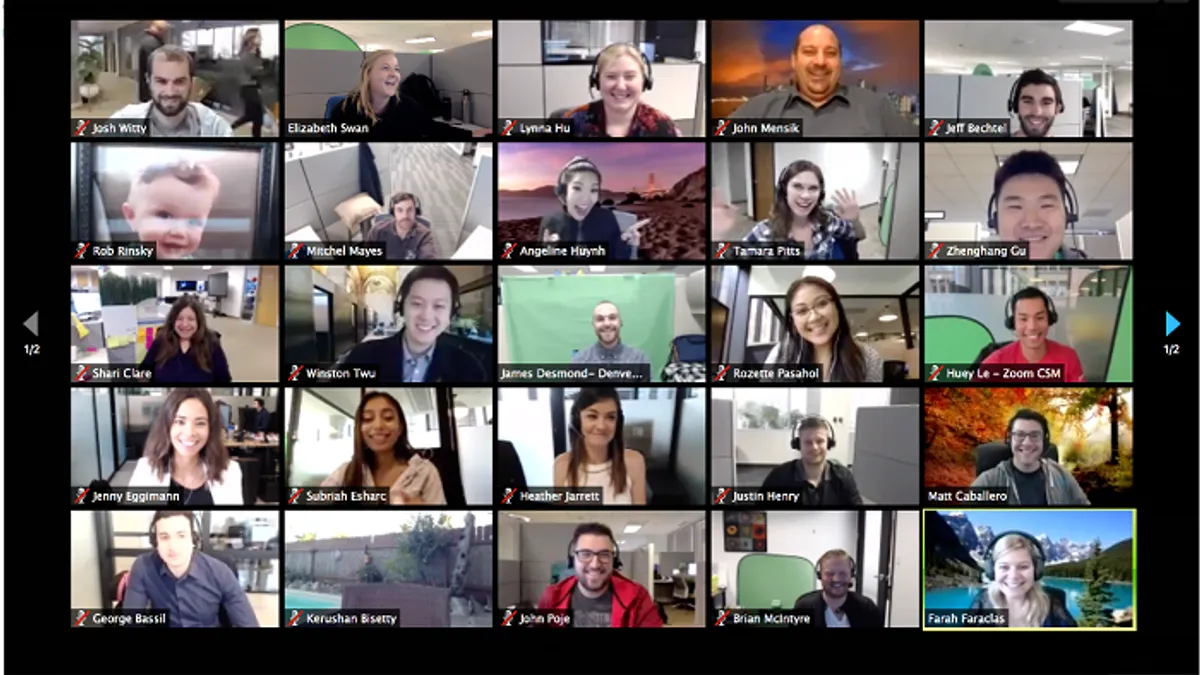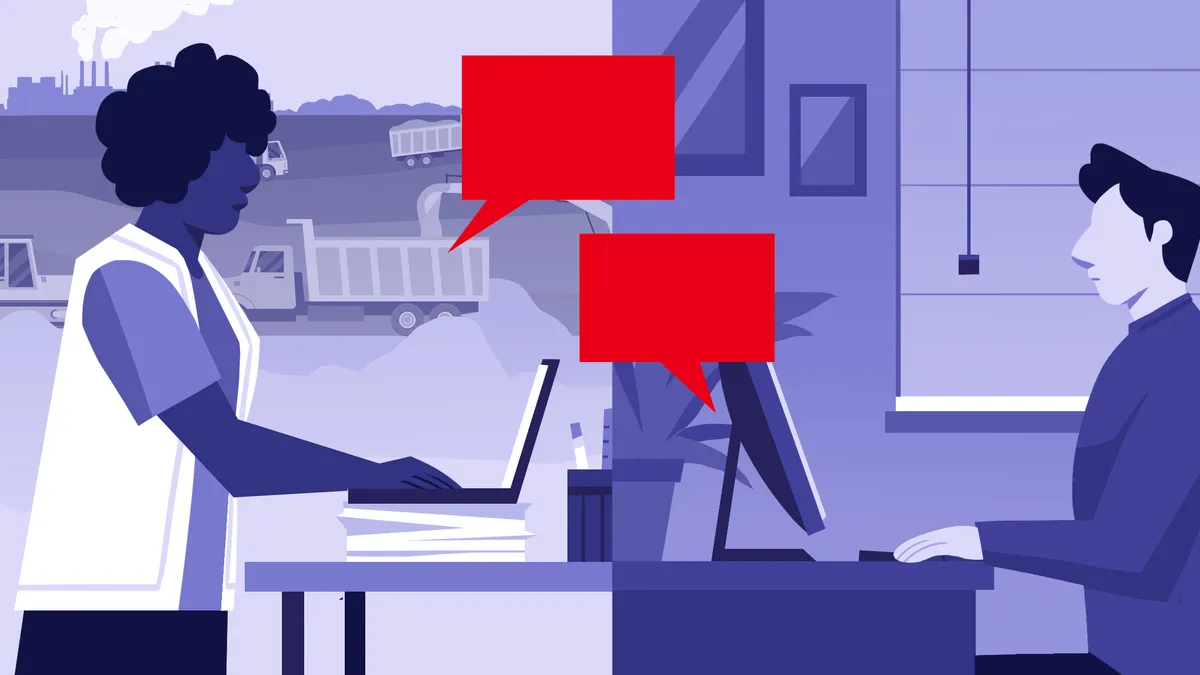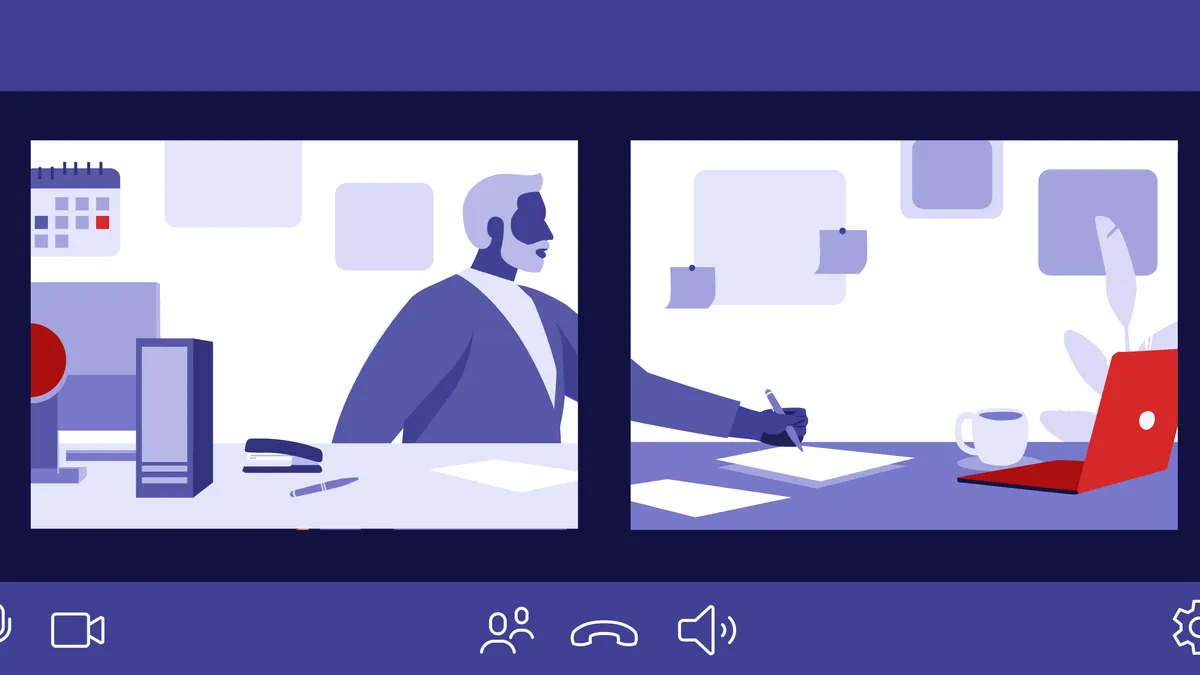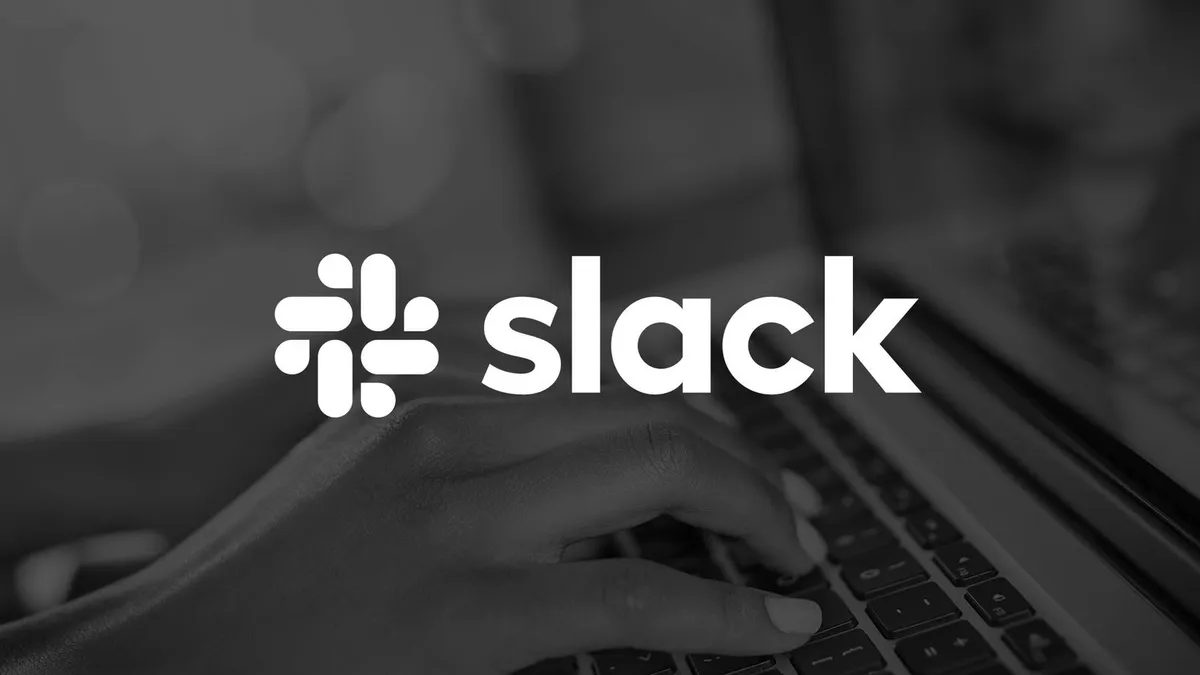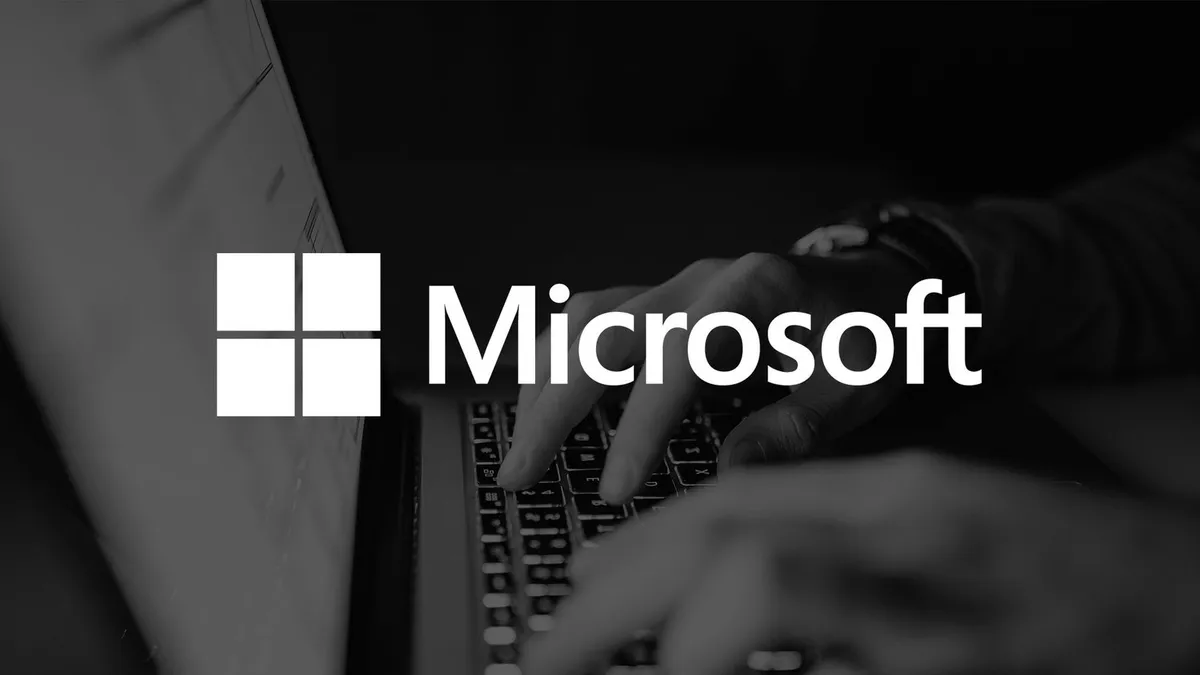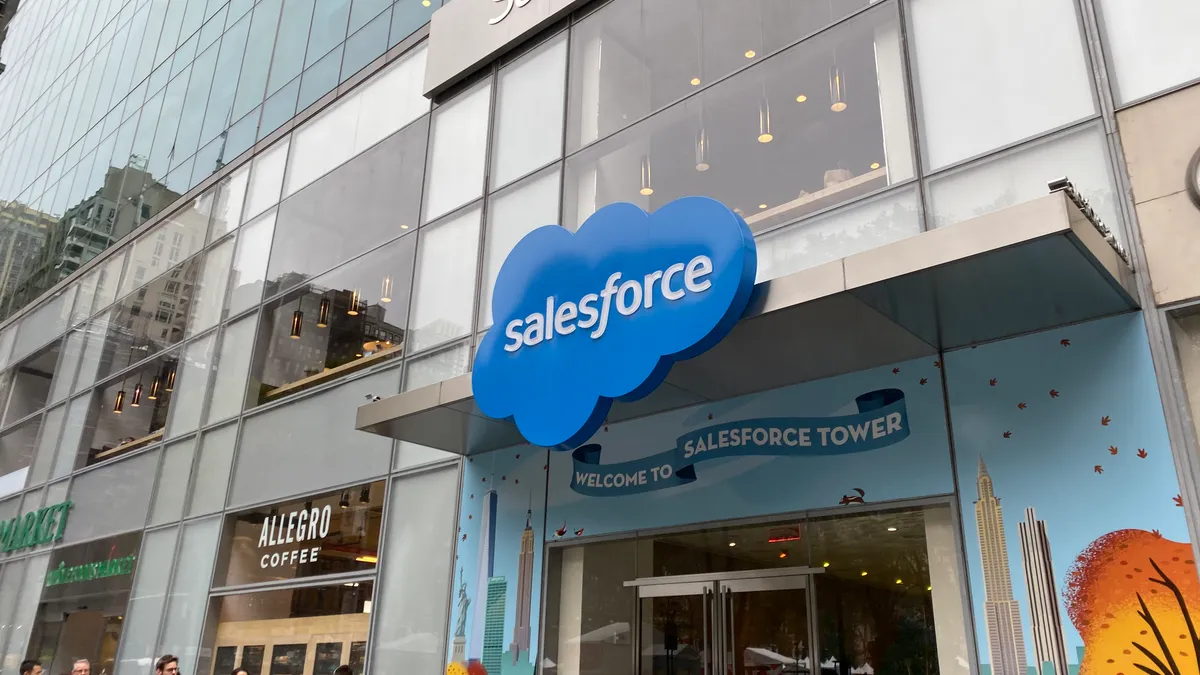Editor’s note: This story is part of the CIO Dive Outlook on 2021, a series on the trends that will shape the industry in 2021. For a look at the business trends affecting other industries, see the Dive Outlook on 2021.
Absolute Software started 2020 with splashy plans for its physical meeting rooms. The company, with five offices across Europe, Asia and North America, wanted to outfit conference spaces with big monitors and cameras that tracked speakers around the room.
After the COVID-19 pandemic sent most of the globe's workforce home, the company shifted gears, rethinking how employees participate in meetings regardless of their location, using tools such as videoconferencing and virtual whiteboarding software.
"Nobody's been in those meeting rooms now for nine months," said Dianne Lapierre, CIO at Absolute Software.
Leaders in 2020 grappled with the implications of large-scale changes to business operations. Now, the year ahead is all about making those changes sustainable.
What's ahead for businesses is a mix of coming together physically and working apart, Lapierre said. Under a hybrid work model, companies can use colocation for collaborative work, while allowing employees retain flexibility.
HR professionals expect roughly half of the workforce will want to come back to the workplace – at least part time – after a COVID-19 vaccine is widely available, according to a Gartner survey. Nine in 10 HR pros plan to offer remote work options after that point.
With a set of evolving tools for centralizing work, managers will spend 2021 making outcomes and impact their priority, on their way to safeguarding company culture through the changes.
Though present in the pre-pandemic days, the use of videoconferencing and collaboration platforms will take on a central role as more companies commit to distributed operations at least some of the time, for part of their workforce, until further notice.
Creating a hybrid work playbook
In light of the pandemic, Dropbox laid out permanent changes to its work strategy.
Under a virtual-first philosophy, the company began transforming its offices into what it calls "studios," spaces aimed at collaboration instead of solo work. "For the most part, we can work as teams and collaborate using our own products," said Sylvie Veilleux, CIO at Dropbox, speaking at Reuters Events' MOMENTUM Virtual Forum in December.
Though companies may have been adept at supporting remote work prior to the pandemic, leaders are pressed to adjust their their models to the new context.
"I don’t think we can talk about remote work in isolation of hybrid work models," said Amy Loomis, research director, Future of Work at IDC, in an email. While work from home will continue to be the primary setting, this year will see the normalization of any-place, anytime access to "the people, data and applications that you need to get work done."
The model shift is impacting CIOs' buying decisions, with productivity tools atop the categories of software spend projected for 2021, according to Spiceworks Ziff Davis. North American CIOs will devote 14% of their yearly software budgets to productivity tools.
For 2021 and beyond, the vision of hybrid work centers around a "flexible arrangement where employees are going to be flowing through different work sites, work facilities, even different work schedules," said George Penn, vice president, advisory in the Gartner HR practice. "Some of the biggest concerns that organizations have are around culture, and the capability of management and employees themselves."
Stripped of physical headquarters to help unite the workforce, business has turned to enterprise software tools as a manifestation of the office.
Platform evolution in the new year will be marked by "the ongoing development of intelligent digital workspace," said Loomis. Under a single platform, remote and hybrid workers can securely access critical work tools and assets.
Companies will entrust the CIO with supporting new work models — and exact pressure if these aren't working smoothly. Among CIOs, the pandemic enhanced the perspective that parts of the organization are customers as well, internal customers that the CIO serves in order to support their experience.
"The needs of my customers have continued to evolve, and their expectations of the tooling that they need to do their jobs has certainly evolved," said Lapierre. "The speed in which we need to respond to those requirements that our businesses have is only increasing."
Flipping the work script
The asynchronous nature of work as a default will become pervasive among companies hoping to sustain their remote work strategies, according to Darren Murph, head of remote at GitLab.
"I do think it will catch on," said Murph. "I think it will start in technology companies. Companies that have mostly digital outputs are in an ideal state to shift over to asynchronous workflows more quickly."
GitLab was remote from its inception. Last year it launched the Async 3.0 initiative, a push to reduce the amount of meetings it held, and shift as much work as possible into an asynchronous workflow. The initiative is seen as a contribution to diversity, belonging and inclusion.
"The more work that you can shift to asynchronous, you open up the possibility for a larger chorus of voices to have their contributions valued and shared," said Murph. "Also, it allows people around the world who are dealing with a global pandemic to work on time that works for them."
Tools at the ready
Efficiency tracking software became elevated in the pandemic, perhaps driven by the perception that efficiency was compromised under a remote setting. Slack, which saw usage rise in the aftermath of the pandemic, rolled out a set of productivity metrics.
But in evaluating their productivity, organizations should assess the outcomes and impact employees generate, instead of tracking time and activities, said Penn.
"If I'm tracking time, or when people log in and log out, you need to ask the question, is that really building trust?," Penn said.
Organizations that managed to push through the disruption of the COVID-19 pandemic were those that generated the highest levels of trust between management and employees, according to Penn. The rest of the year poses an opportunity to reimagine performance management processes and the technology that supports it.
"We want those systems to help contribute to driving higher performance, not just be administrative tasks," said Penn.








